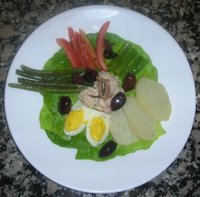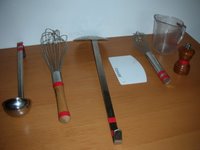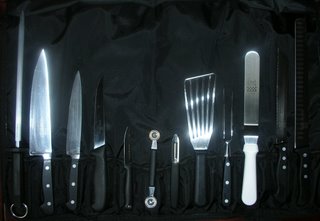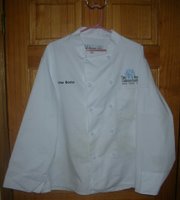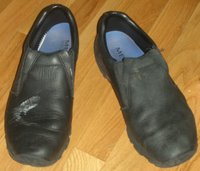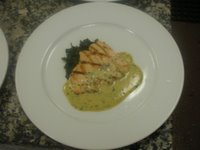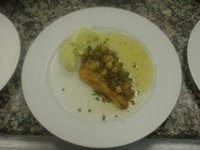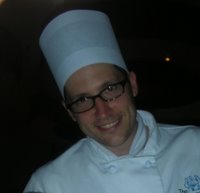CUCINA OSPIZIO
 There's nothing like home-cooking in your mother's kitchen. I can remember watching my mother cook with fascination ever since I was old enough to peer over the side of the oven. My initial curiousities were spawned by soft-boiled eggs, pastina, tapioca pudding and chocolate-chip cookies and "helping" by stirring the spaghetti helped put me on the path I'm on today. It's been the feasts Mom cooks for family events that have taught me the satisfaction of making others happy with homemade food, something I did for buddies and girlfriends throughout college and since, often experimenting with sometimes varied results. Until I started culinary school, those family feasts had also skewed my portion sense; I'd always cook at least double the amount of food needed for dinner. When you're cooking for a bunch of guys it works; if not, freezer-food.
There's nothing like home-cooking in your mother's kitchen. I can remember watching my mother cook with fascination ever since I was old enough to peer over the side of the oven. My initial curiousities were spawned by soft-boiled eggs, pastina, tapioca pudding and chocolate-chip cookies and "helping" by stirring the spaghetti helped put me on the path I'm on today. It's been the feasts Mom cooks for family events that have taught me the satisfaction of making others happy with homemade food, something I did for buddies and girlfriends throughout college and since, often experimenting with sometimes varied results. Until I started culinary school, those family feasts had also skewed my portion sense; I'd always cook at least double the amount of food needed for dinner. When you're cooking for a bunch of guys it works; if not, freezer-food.But the picture of the kitchen above isn't physically the same kitchen I grew up with. It's the same area of the house but expanded and redecorated with a six burner stove and an island with a lot of counter space, something I can only dream of while cutting away on my square foot counter space in Greenpoint.
 I served the Potage Cultivatuer with toasted French baguette and grated gruyere per the school recipe to begin the meal. Mom's main course? Stuffed peppers, potatoes and carrots (grandmother's recipe with Mom's secret ingredients added). I served my "Reconstructed Carrot Cake," for dessert but the peppers were the highlights-- recipe after the jump.
I served the Potage Cultivatuer with toasted French baguette and grated gruyere per the school recipe to begin the meal. Mom's main course? Stuffed peppers, potatoes and carrots (grandmother's recipe with Mom's secret ingredients added). I served my "Reconstructed Carrot Cake," for dessert but the peppers were the highlights-- recipe after the jump. STUFFED PEPPERS RECIPE
STUFFED PEPPERS RECIPE- 1 Package of Ground Pork
- 1 Package of Ground Beef
- Italian Rice
- 2 Eggs
- Locatelli Romano, grated
- Onion Soup Mix
- 1/4 cup Ketchup
- 5 Green peppers
- Bread crumbs
- Grandma's Homemade Tomato Sauce (made with garden-grown tomatoes), frozen
1) Cook Italian rice, 1 cup rice to 1 1/2 cups water,
2) Mix the ground meats together then add the eggs, cooked rice and the grated Romano. Add a pinch of salt and season to taste with pepper, onion and garlic powders. Add secret ingredients: 1/2 packet of onion soup mix and 1/4 cup of ketchup. Mix well.
3) Cut tops off peppers but keep intact. Remove pepper pitch and stuff with seasoned meat and rice mixture. Sprinkle tops with bread crumbs.
4) Ladle tomato sauce along bottom of casserole dish, place stuffed peppers in casserole. Ladle remaining tomato sauce into dish around peppers. Cover with tented foil so that no sauce touches foil (the tomato acid reacts with the foil if they touch).
5) Cook in preheated oven at 350 degrees for 1 hour.
6) Remove from oven, slice peppers in half and drape with tomato gravy from casserole.
FULL POST...










